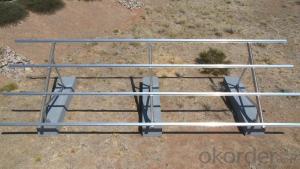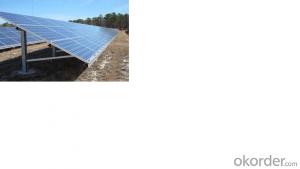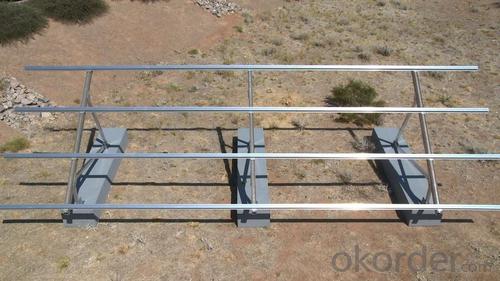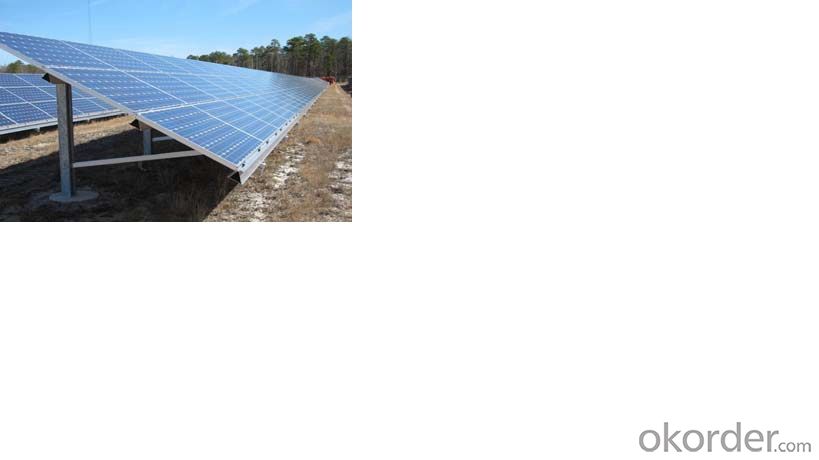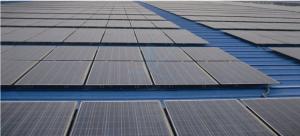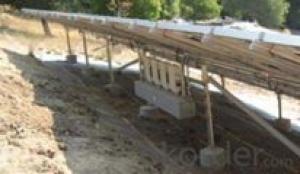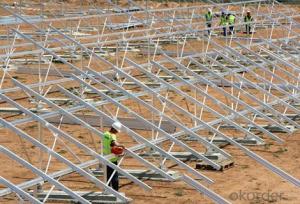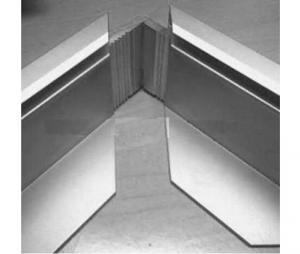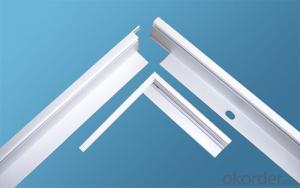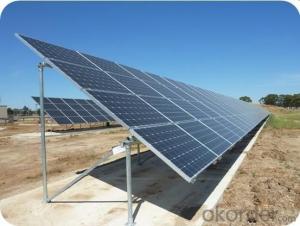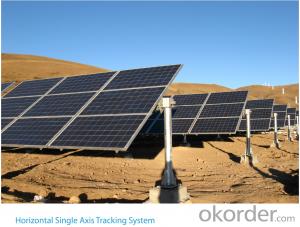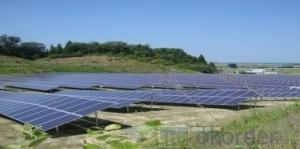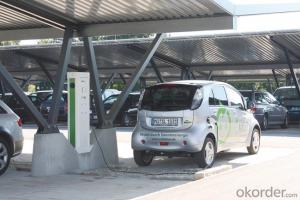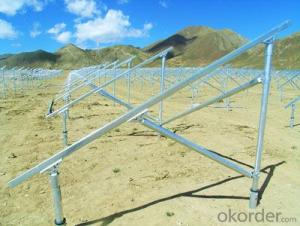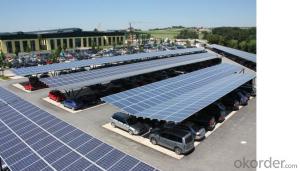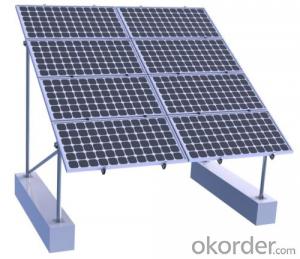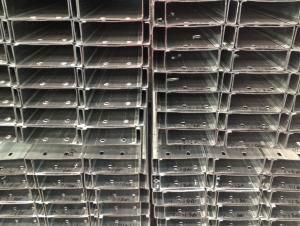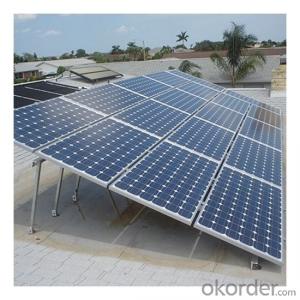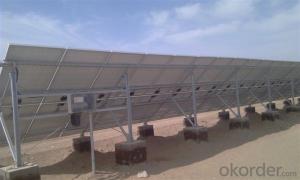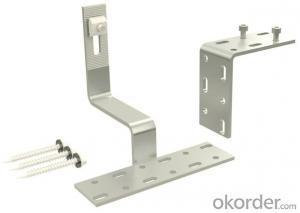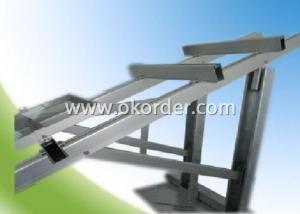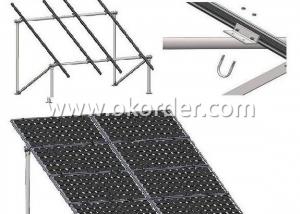Tesla Compatible PVMAX3 Solar Mounting System
- Loading Port:
- China Main Port
- Payment Terms:
- TT OR LC
- Min Order Qty:
- -
- Supply Capability:
- -
OKorder Service Pledge
OKorder Financial Service
You Might Also Like
Pvmax3Solar Mounting System
Die Schletter Freilandsysteme zeichnen sich durch minimale Montagezeit,
lange Lebensdauer und hohe Wirtschaftlichkeit aus. Anhand vorgegebener Projektdaten - länderspezifischer Normen und Vorgaben - berechnen wir für Sie die komplette Statik und
erstellen einen lückenlosen Projektplan. Dies garantiert eine verlässliche Standsicherheit und
hohe Ausfallsicherheit.
Baukasten-Komplettsystem mit Aufbauanleitung
Für 1-10 Stellplätze
Anwendbar für die meisten Standard-Modulgrößen
Dachneigung 10 Grad - optimiert für unterschiedliche Ausrichtungen
Auspacken – Aufstellen – Fertig
- Q: Can a solar mounting system be installed on a rooftop with an asphalt shingle roof?
- Yes, a solar mounting system can be installed on a rooftop with an asphalt shingle roof. The system is designed to securely attach to the roof structure, typically using flashing and roof attachments, ensuring the panels are properly supported and sealed to prevent any damage or leaks.
- Q: Are there any financial incentives available for installing a solar mounting system?
- Yes, there are several financial incentives available for installing a solar mounting system. These incentives vary depending on the location and can include federal tax credits, state and local grants, rebates, and net metering programs. These incentives can significantly reduce the overall cost of installing a solar mounting system and make it a more financially viable option for homeowners and businesses.
- Q: Can a solar mounting system be installed on a rooftop with a single-ply membrane roof?
- Yes, a solar mounting system can be installed on a rooftop with a single-ply membrane roof. However, it is essential to ensure that the installation is done correctly to avoid any damage to the roof and to maintain its integrity. It is recommended to consult with an experienced professional to assess the roofing structure and determine the most suitable mounting system for the specific single-ply membrane roof.
- Q: Can a solar mounting system be installed on a thatched roof?
- Yes, a solar mounting system can be installed on a thatched roof. However, it requires careful planning and installation to ensure that the roof's integrity is not compromised and that the solar panels are securely attached. Additionally, regular maintenance and inspections are necessary to ensure the thatch remains in good condition and does not obstruct the functioning of the solar panels.
- Q: Can a solar mounting system be used in areas with limited access to solar leasing options?
- Yes, a solar mounting system can be used in areas with limited access to solar leasing options. Solar mounting systems provide a structure to securely install solar panels, allowing individuals or businesses to directly purchase and own the solar system. This eliminates the need for leasing options and allows for greater flexibility and control over the solar energy system.
- Q: Can a solar mounting system be used with solar-powered agricultural applications?
- Yes, a solar mounting system can be used with solar-powered agricultural applications. The mounting system provides a stable support structure for solar panels used in agricultural applications such as powering irrigation systems, water pumps, or electric fences. It helps to ensure optimal positioning and orientation of the panels, maximizing sunlight exposure and thus increasing the efficiency of the solar-powered agricultural system.
- Q: Can a solar mounting system be used with solar-powered security systems?
- Yes, a solar mounting system can definitely be used with solar-powered security systems. The solar mounting system provides a secure and efficient way to install solar panels, which generate the power needed for the solar-powered security systems to operate effectively. By using a solar mounting system, the solar panels can be positioned optimally to capture sunlight and convert it into energy, ensuring a reliable power source for the security systems.
- Q: Can a solar mounting system be used for solar billboards or signage?
- Yes, a solar mounting system can definitely be used for solar billboards or signage. These systems are designed to securely hold and position solar panels, making them suitable for various applications including billboards and signage. By harnessing solar energy, these systems can power the billboards or signage, providing a sustainable and cost-effective solution.
- Q: Can a solar mounting system be installed on a manufacturing or industrial facility?
- Yes, a solar mounting system can be installed on a manufacturing or industrial facility. These facilities often have large roof spaces or open areas that are ideal for installing solar panels. Moreover, installing solar panels on such facilities can help offset their energy consumption and reduce their carbon footprint, making it a cost-effective and sustainable solution for the long-term.
- Q: Can a solar mounting system be used with solar-powered heating systems?
- Yes, a solar mounting system can be used with solar-powered heating systems. A solar mounting system is designed to securely hold and position solar panels, which capture sunlight and convert it into electricity. Solar-powered heating systems utilize this electricity to generate heat for various applications, such as heating water or space. Therefore, a solar mounting system is essential for properly installing and optimizing solar panels, ensuring effective operation and maximum energy generation for solar-powered heating systems.
Send your message to us
Tesla Compatible PVMAX3 Solar Mounting System
- Loading Port:
- China Main Port
- Payment Terms:
- TT OR LC
- Min Order Qty:
- -
- Supply Capability:
- -
OKorder Service Pledge
OKorder Financial Service
Similar products
Hot products
Hot Searches
Related keywords
